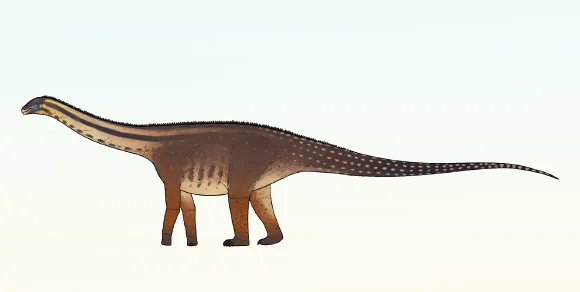
Unveiling the Past: A New Sauropod Dinosaur Species Discovered in Argentina
2025-04-14
Author: Mei
A Historic Discovery in Neuquén
Exciting news has emerged from Argentina! Paleontologists have unearthed a brand new genus and species of rebbachisaurid sauropod dinosaur, now officially dubbed Cienciargentina sanchezi. This remarkable find dates back to the Late Cretaceous epoch, approximately 94 million years ago.
Meet Cienciargentina sanchezi
What sets Cienciargentina sanchezi apart? This fascinating sauropod is heralded as the earliest member of the diplodocoid family Rebbachisauridae identified to date. The Rebbachisauridae flourished primarily on the supercontinent Gondwana during the Cretaceous period, showcasing adaptations that distinguish them from other sauropods.
A Global Perspective on Rebbachisaurids
Rebbachisaurids have been primarily found in fragmentary fossil remains across continents, including South America, Africa, North America, and Europe—potentially even reaching Central Asia. Their unique teeth help identify them; some species are known for intricate tooth structures resembling those of hadrosaur and ceratopsian dinosaurs.
Crucial Insights from Patagonia
According to Leonardo Salgado, a key researcher from the Universidad Nacional de Río Negro-Conicet, rebbachisaurid remains were first recognized around Villa El Chocón in Neuquén Province, highlighted by finds from the Candeleros and Huincul formations. The fossils from Huincul are especially important as they represent the last known diplodocoids before their eventual extinction.
The Jurassic Shift: What This Means for Paleontology
Paleontologists note that Cienciargentina sanchezi adds to the growing list of rebbachisaurid sauropods found in the Huincul Formation, now believed to be among the last of the diplodocoids globally. Notably, after the Turonian period, sauropod communities transitioned exclusively to macronarians, most notably titanosaurs. This discovery contributes crucial information to understanding the dramatic faunal changes that transpired during the mid-Cretaceous in Patagonia.
Published Research: A Step Forward in Cretaceous Studies
This groundbreaking research was published in the journal Cretaceous Research this month, shedding light on the evolutionary journey of these magnificent creatures that once roamed our planet.



 Brasil (PT)
Brasil (PT)
 Canada (EN)
Canada (EN)
 Chile (ES)
Chile (ES)
 Česko (CS)
Česko (CS)
 대한민국 (KO)
대한민국 (KO)
 España (ES)
España (ES)
 France (FR)
France (FR)
 Hong Kong (EN)
Hong Kong (EN)
 Italia (IT)
Italia (IT)
 日本 (JA)
日本 (JA)
 Magyarország (HU)
Magyarország (HU)
 Norge (NO)
Norge (NO)
 Polska (PL)
Polska (PL)
 Schweiz (DE)
Schweiz (DE)
 Singapore (EN)
Singapore (EN)
 Sverige (SV)
Sverige (SV)
 Suomi (FI)
Suomi (FI)
 Türkiye (TR)
Türkiye (TR)
 الإمارات العربية المتحدة (AR)
الإمارات العربية المتحدة (AR)